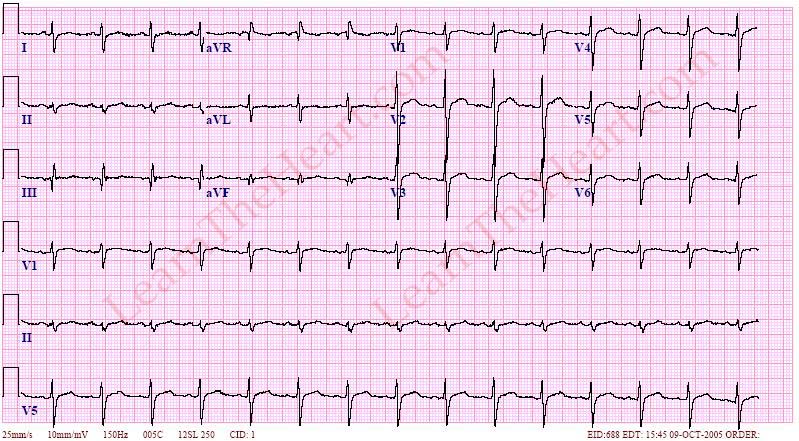Topic Reviews A-Z
Left Posterior Fascicular Block (LPFB)
A left posterior fascicular block (LPFB) also known as a left posterior hemiblock (LPHB) occurs when the posterior fascicle of the left bundle branch is no longer able to conduct action potentials due to injury or fibrosis.
This is much less common than a left anterior fascicular block (LAFB) since the posterior fascicle is much more sparsely distributed, so a large amount of myocardial or conduction tissue must be damaged to block the posterior fascicle.
The criteria to diagnose a LPFB is as follows:
- Right axis deviation of 90 to 180 degrees
- The presence of a qR complex in lead III and a rS complex in lead I.
- Absence of RAE and RVH.
A LPFB can occur simultaneously with a right bundle branch block. This combination is called a bifascicular block.
Left posterior fascicular block.
Bifascicular block. This is a right bundle branch block and left POSTERIOR fasicular block in this example.
Note: The pattern of a LPFB sometimes appears similar to the S1Q3T3 pattern sometimes present in a patient with an acute pulmonary embolism. This ECG finding is termed the McGinn-White sign.
There is no major clinical significance to the presence of a LPFB, except it indicates some degree of conduction system disease and thus a somewhat higher risk of progression to higher forms of heart block in the future.


